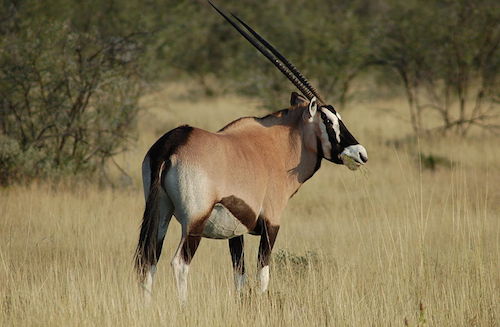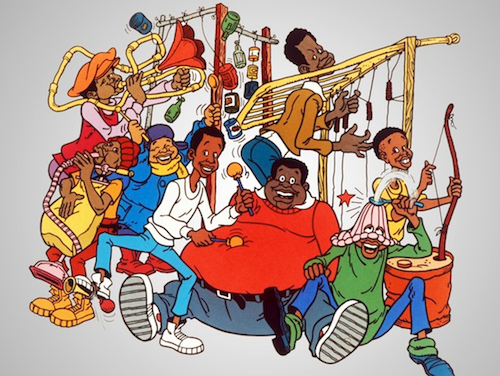
I have trouble thinking about form in poetry. From a wide view, it makes rough sense—a poem has a different form than a novel, Western than Rom-Com, opera than pop song. But that’s genre, not form, isn’t it? Same at the level of the page. I can see the difference between short, skinny lines and boxy sonnets, the heavily indented and left-justified, George Herbert’s altars and Apollinaire’s Calligrammes. But surely form’s something grander than that, more than just the shape poems take in white space.
It’s easy to think that before Modernism, form used to take care of itself. The poet chose a meter—trimeter, tetrameter, pentameter, or hexameter tricked out with its various feet (trochees, anapests, iambs, spondees)—and selected a form to contain it. Your sonnet’s got fourteen lines and a volta, the villanelle repeats those two rhymes then touches them together at the end, haiku’s a tidy 5-7-5, etc. Follow the instructions and everyone knows you’ve made a poem. It might be awful, but its form isn’t in question.
I doubt things were ever that simple. But it’s true that form got more slippery with the 20th century. Free verse, open form, serial poems, bop prosody, projective verse—these aren’t accidentals on the scale, but entirely new instruments. It’s like the great tempered keyboard of English prosody, Skelton to Stevens, gave way to the repurposed bedsprings and trashcans in Fat Albert’s junkyard band.

That’s not a diss on the junkyard. Poets have been playing there at least since Eliot shored his fragments against the ruins, and the improvisatory beauty of poetry’s last century or more depends largely on a feeling for civilization as junkyard, atrocity, old bitch gone in the teeth, confidence trick, toxic waste dump, etc. Most contemporary experiments with form, however energetic or affirming the results, are underwritten by a sense of catastrophe, spun on an axis of brokenness and renewal. What separates us, I think, most profoundly from the writing of other poetic cultures—be it Mughal-era Urdu or 19th-century American—is that missing sense of catastrophe, the poets’ apparent complicity with their inherited meters and forms.
To get a better handle on what form is, or was—and to get outside my own preconceptions about it—I’ve been drawn more and more to writing about the qasida. This pre-Islamic Arabic form is one of the most durable and baffling in world literature. Rooted in the Bedouin cycles of nomadic desert life, its campsites and camel dung, ostriches and oryxes spread with Arabic into poems written in wildly different cultural contexts, from Persian courts to Himalayan summits, Levantine port towns to Central Asian steppelands, not so unlike how the winterscape of Christmas survives in Sydney or Southern California. Indeed, like Christmas, the stock images of the qasida are so fixed that Jaroslav Stetkevych was able to assemble a catalog of seven keywords—ruins, the abode, the question, etc.—that appear in most every iteration of the poem’s first section, the nasib.
At the same time, the connections between the traditional parts of the qasida—the nasib, or nostalgic remembrance at the campsite (from which the ghazal sprung); the rahil, or journey; and the closing praise or boast—are so loose and opaque that the Egyptian novelist Taha Hussein suggested there was no overall formal coherence to the qasida at all, just rhyme and meter dancing out their requirements. More recent scholars defend the qasida’s formal integrity by hunting for signs of “ring composition,” that Persian rug-like, symmetrical mirroring of themes common to oral tales and, it’s been said, to the Harry Potter novels.
The most remarkable book I’ve read on the subject isn’t by a scholar, but a poet: Harold Schimmel’s slim, easy-to-palm Qasida. It’s one of the many elegant titles published by Ibis Editions, Peter Cole and Adina Hoffman’s Jerusalem-based press devoted to an expanded, more promiscuous idea of the Levant, contiguous to Ammiel Alcalay’s borderless zone of inter-lingual influence and exchange in his vibrant After Jews and Arabs: Remaking Levantine Culture. Schimmel himself is an American-born Israeli poet whose commitment to the beauty of the Arabic qasida has an understated but up-front political resonance of its own.
What I like about Schimmel’s approach to the qasida is the way he reads its formal features as an allegory for the problem of form in general. From the opening aphorism (his chosen form for thinking about the qasida), he announces his subject to be
The apparatus of poetry itself, which is to say a poem as a formal mode without a center, a qasida. A concept of form for the complex poem, the style of the qasida: polyphonic, shifting, fickle.
As the aphorisms pile up, the qasida—really, the notion of poetic form—emerges as “an articulation of motion, a Kama Sutra of positioning.” Form becomes less a shape for containing experience than a possible way of moving through it. It’s the “redundance” of images and metaphors in the qasida—its highly conventionalized, almost ritualized formal features—that activates its capacity for intricate, braid-like variation. Schimmel puts it better: “A surfeit of transformations against the ground of the changeless, as in a sex manual.”
That’s as good a metaphor as I’ve found for thinking about form in poetry. A poem couples disparate things within a set of familiar positions, yet makes every iteration of the act feel like the first time it’s been done. At its best, it tests the limits of how much we can connect and “re-member” (Schimmel’s formulation), until the limitations of form mirror the limits of bodies in time. And if the qasida’s essentially a study in motion—oscillating between experience and memory, trace and presence, campsite and camel ride, desire and resignation, abasement and boast—its progress depends, paradoxically, upon its boundedness. The seven keywords, the stock scenes, the fixed gears of sentiment serve as desert and horizon to give the qasida traction and direction, landmarks to head for and terrain to move against.
Or, as Andras Hamori, another qasida sage, puts it:
Perhaps [comparison] is more than a poetic mannerism; perhaps it goes some of the way toward redeeming the experience of memory. Their end is to be compared; we do the comparing. We are imprisoned in time, every bit as much as the things that surround us; to compare, to sort out the relations about us, to actively experience our being in time is making the best of it.
Koeneke was born in Omaha, Nebraska, and grew up in Tucson, Arizona, and Los Angeles. He is the author...
Read Full Biography

